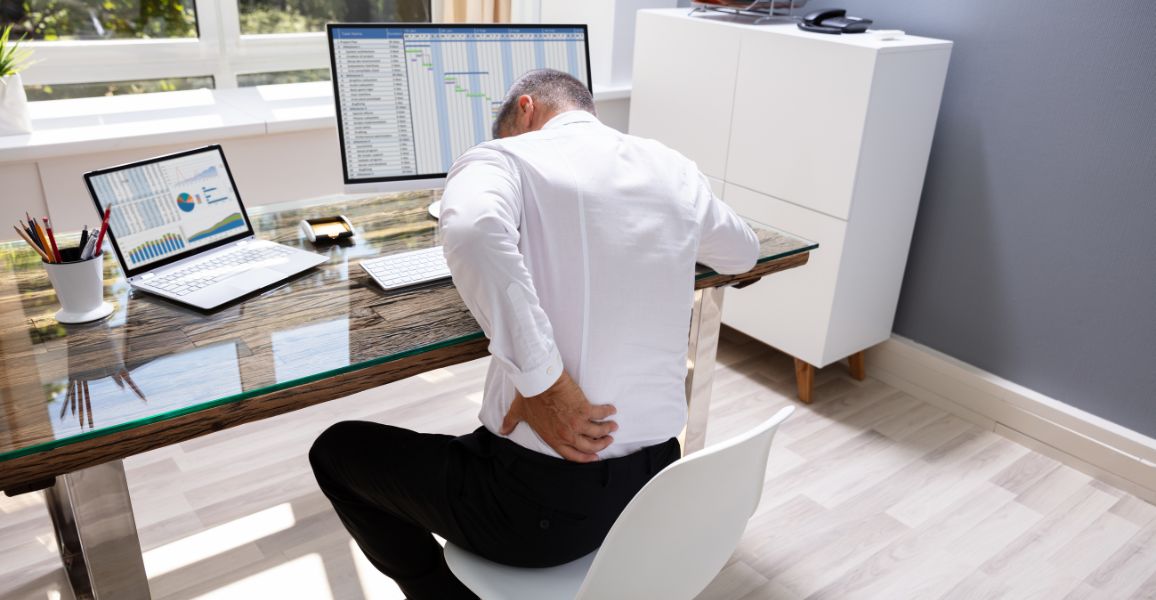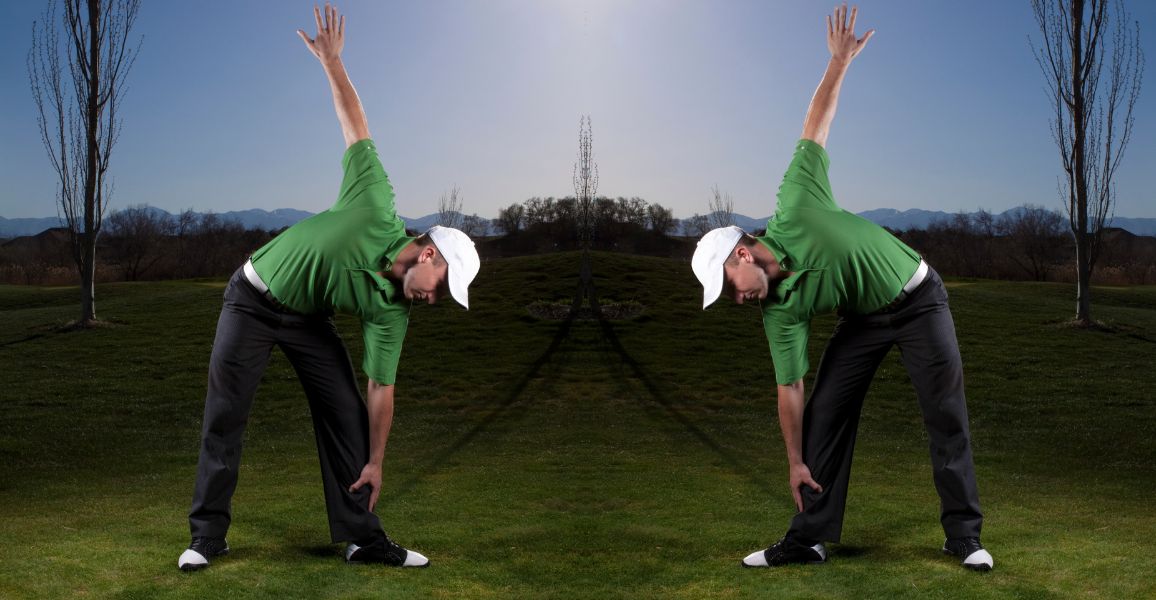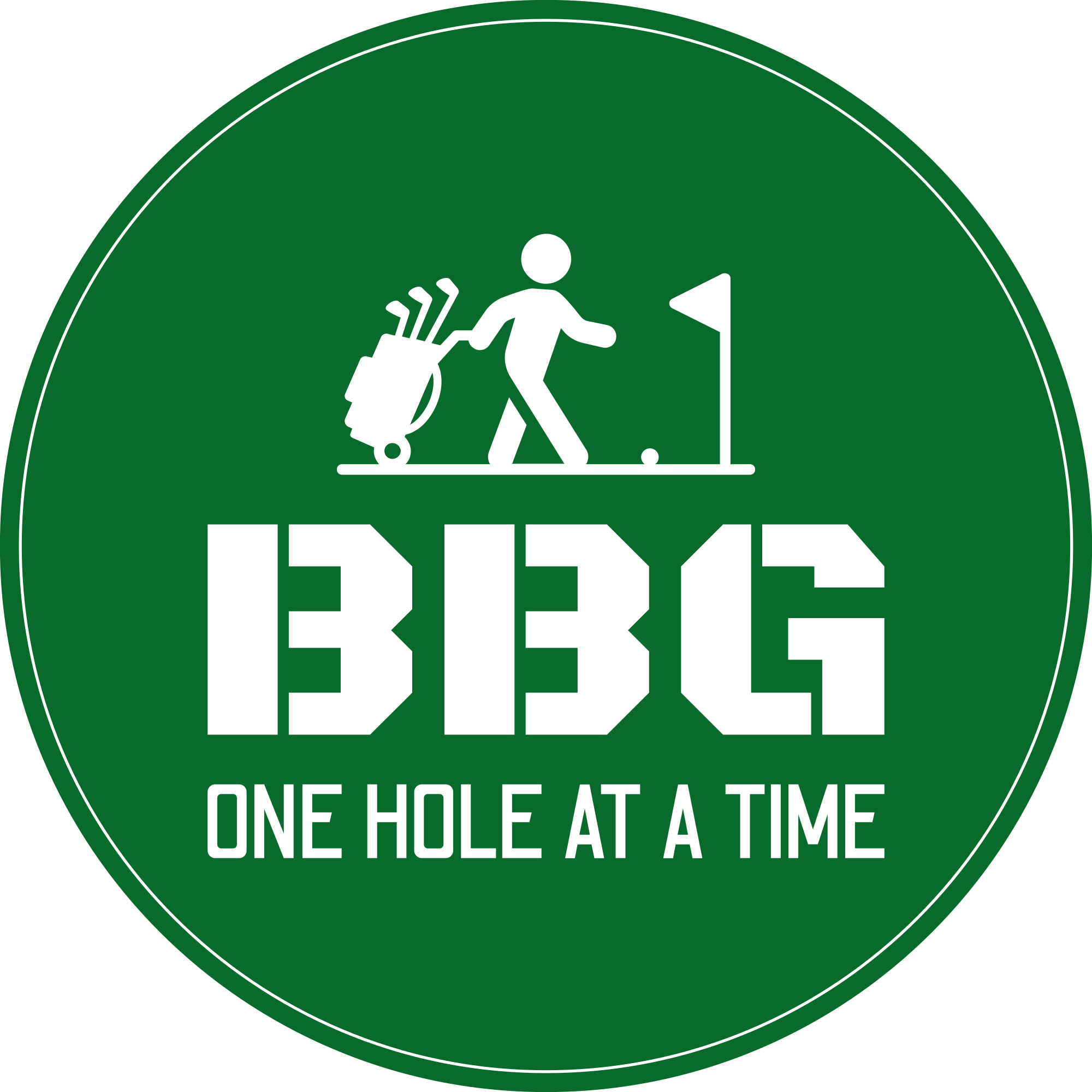A study has shown that 28.1% of golfers suffer lower back pain. That’s significant. That makes it the most common injury for golfers, with left knee pain coming in a close second or right knee pain if you are left-handed.
Back pain can ruin playing golf for many golfers and make enjoying a round tricky, even on a good day, possibly resulting in you removing yourself from the competition.
I had suffered badly from lower back pain, a tight left hip flexor, and a weak thoracic spine which greatly affected my golf game.
Playing whole rounds without crouching to read putts or getting my buddies to grab my ball from the hole.
It almost turned me away from playing golf as the pain became severe.
However, today, I play golf twice weekly with a couple of driving range sessions thrown in… completely pain-free.
Not only that, but I began shooting my lowest scores ever.
Below are all things I have worked on and continue to do regularly.
Everything I will go into helped me to enjoy playing golf again and start shooting lower scores.
You don’t need fancy equipment or a gym membership, and you should start to feel relief after a few weeks.
However, I am not a certified medical expert, and this approach worked for me.
I recommend booking a consultation with a doctor or physical therapist if your back pain is severe.
How Being Flexible Can Level Up Your Game
When you’re muscles are tight or sore not only is it distracting but it means you’re not getting the most from your body. It’s holding you back.
Without good flexibility you will struggle to make a full turn both on the backswing and downswing. Just from a distance point of view you’re shooting yourself in the foot by doing this.
To get the maximum amount of distance the club has to travel as far as possible throughout the swing.
By becoming more flexible, you’re turning more and twisting your back and midsection up like a coil. This coil is key to bursting the ball miles down the fairway.
And while being flexible can help with distance that’s not the only way it will level up your golf game.
Being flexible and not having any restrictions in your body give you more control.
This control can help you stay in position throughout the entire swing without compensating somewhere else to get the club back.
Having this control mixed in with the extra distance can be enough to cut a few shots of you’re rounds easily. And to think all you need to do is stretch regularly.
What Causes Back Pain In Golf?
The cause of your back pain won’t be as easy to diagnose as some of your other body parts.
Because your entire spine is full of sensitive nerve endings.
Not to mention that your back muscles are engaged in almost every one of your movements.
Explaining why it’s easier to pinpoint the moment that caused your shoulder pain but not what triggered the pain in your back.
From my experience, whatever we think is triggering our pain is rarely the actual cause.
More often than not, it’s a combination of factors that I will break down for you below.
Your Golf Swing

Being a golfer, you’ve probably heard from non-golfers that it’s not a sport, that you don’t have to be fit, and often use John Daly as an example to back their claim.
In reality, John Daly is a stud; they’re probably saying that because they failed to hit a golf ball once, and they don’t understand the power of the golf swing.
Your golf swing is one of the most demanding sports movements — the goal is to have the most efficient golf swing.
Your entire body and mind must move harmoniously to strike a tiny golf ball with a slightly larger club head at incredible speeds.
This rapid and twisting motion puts a lot of stress on your back.
Believe it or not, your back is not designed to twist as freely.
Other upper body parts, like your shoulders, have a rotator cuff that gives the joint more freedom.
Out of the factory, it’s made for stability.
You can expect to lie on the floor later that night if you’ve not prepared your muscles by doing golf stretches or even a golf stretch for the round ahead.
Day To Day Triggers

Golf might only take up a few hours or more of your time throughout the week.
Sure, you’re back might flare up when you’re golfing, but that doesn’t mean that’s the primary cause.
Poor posture and lousy lifting techniques are, in my experience, the most significant contributors to back problems.
These potential triggers can be subtle, and you may feel like you’re posture is okay or that you can lift things properly.
But more often than not, this is not the case, and they affect your golf game for the worse.
How you sit on the couch with your knees bent, slouch at your desk, or even sleep at night can all contribute to the pain in your back.
Then if you factor in all the times you lift things incorrectly or use the improper form when working out with weights or on a rowing machine, you’ve got a serious problem.
Muscle Imbalances And Tightness
Your body and all your different muscles work together.
Which is great if every upper or lower body muscle is on the same level.
However, this isn’t always the case, and if one muscle group isn’t pulling its weight, then the connected muscle groups have to pick up the slack.
Kind of how it works in the real world at your job. If a team member is slacking, it makes everyone else’s job harder.
What does this mean for your back?
Well, it means there’s a chance your soreness has nothing to do with your back and is caused by a weak core, tight hip flexors, or leg muscles.
These muscle groups are connected directly to your back, so if they’re slacking, your back is put under additional pressure, which can cause pain.
Similarly, if they work together, they’ll decrease pressure on your back.
If any of these 3 muscles are stiff, you have a higher risk of injuring yourself when you swing.
What You Can Do To Avoid Backpain When Golfing

Painful lower back pain will not be permanently relieved from a few one-off stretches before your next round.
To do this, you must have a mobility exercise program to loosen and strengthen your lumbar spine, decreasing lower back tightness.
Below I will list a few areas you can focus on, as well as a tutorial video at the end, which should be suited to everyone regardless of your current condition and fitness level.
Work On Your Posture

Working on your posture on and off the course is a must.
Posture is essential, whether sitting down at your desk or swinging the golf club.
Check out the video below, showing you how to swing the club correctly.
Work On Gaining Some Golf Focused Strength
Working on your core group of muscles will reduce your risk of back injuries.
Working on some basic movements at home over a month or two can bring fast results.
Not all strength training has to be done in the gym.
You can easily find yourself a golf exercise program that you can do from the comfort of your home.
When your muscles become stronger, they can better support your body during certain movements resulting in less pain and more distance with the golf ball.
Work On Improving Your Flexibility

Perfect posture and strong muscles are great, but you need to have some flexibility if they are to benefit your game.
After all, if all your muscles are tight, you won’t have the freedom to do a full unrestricted swing.
This can end in tears if you try to push your body too far.
After two to six weeks of doing these golf stretches, your body should loosen out and be able to swing more freely.
Not to mention a fuller swing will result in you striking the ball further than before.
At the bottom of the article, I’ll include a video showing you how to do some essential stretching exercises.
Golf Stretches You Can Do To Prevent Back Pain
Below is a tutorial for fantastic mobility drills that helped me increase my mobility.
In a relatively short time, I felt a noticeable decrease in pain related to my core muscles.
The following mobility drills are made up of simple and safe movements. There is a little more to it than a standard hamstring or quadriceps stretch, but they are guaranteed to work.
Pay careful attention and know your limits. Enjoy!
